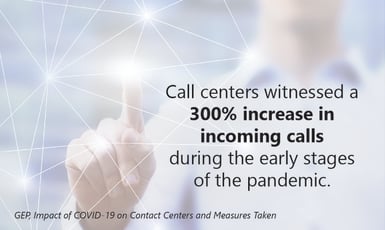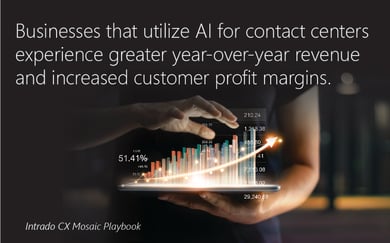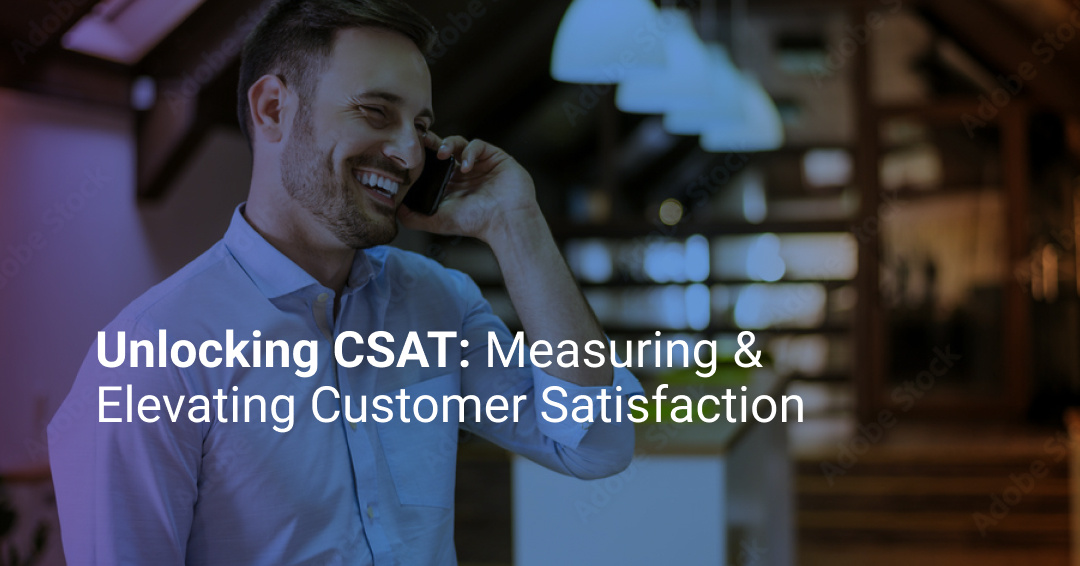12 Call Center Metrics You Should Be Using to Improve CX in 2025
Call center metrics are the most important performance indicators that monitor how effectively your call center is running. This includes anything...
Contact centers are undergoing a transformation. Attrition is on the rise and costs to attract and retain talent are steep. At the same time, contact centers are dealing with a growing volume of requests, which rose by nearly 300% at the start of the pandemic. Relief may seem a long way off, as 73% of CEOs indicate that labor and skills shortages will disrupt their business this year.
Contact centers can alleviate the impact of gaps in the workforce by implementing AI-powered contact center tools such as intelligent virtual agents (IVAs). These AI-enabled communication tools offset the shortage of contact center agents through their ability to communicate with customers like humans.

IVAs are intuitive and can understand human requests through natural language processing (NLP) and conversational AI. As a "virtual receptionist," IVAs enable contact center automation that helps contact center agents manage customer requests. The technology is able to support both common and complex inquiries and respond like human agents do, reducing the burden on live agents to handle all incoming calls. Contact centers that leverage IVAs can generate personalized responses to users, manage increased inquiries, and deliver positive experiences to customers. Because of these features, businesses can use the tool to effectively navigate the unique crossroads of evolving customer demands and labor shortages.
Virtual agents are programmed to be team players, not replace human agents. By deploying IVAs, businesses help their contact center agents manage high call volumes through automation that delivers positive customer experiences. For example, an IVA can answer a call and ask customers the nature of their request. The IVA can then respond with open-ended prompts to direct the caller. The customer's response to these prompts will either continue with the IVA to resolution or move to a human agent for further support.
IVAs can handle and respond to a wide range of customer requests. Not only does this help contact center agents during times of high call volumes, but it frees them up to address more complicated requests. The IVA can recognize keywords and phrases to move the customer along on their journey without needing a human agent. The technology results in decreased wait times regardless of high call volumes, more straightforward navigation, and quick and thorough answers for customers.
Data shows that 73% of customers prefer to solve issues on their own. IVAs leverage interactive voice response (IVR) systems that allow customers to resolve their questions through touch-tone key selections and voice commands. This creates an intelligent contact center that can automate interactions and increase first-time resolutions.
In addition to self-service capabilities, IVAs provide customers with 24/7 availability to contact center support. 24/7 access and self-service go hand in hand to deliver the flexibility that customers crave. Call centers can use IVAs to strategically staff shifts and remove the burden from human agents that were flooded with more calls than they could answer in a business day. With this strategic staffing, customers can rest assured that they have access to resolutions whenever they need it.

Enterprises are wary of the cost of AI tools. However, research shows that investing in quality AI can save businesses money and increase the quality of service provided over time. Therefore, a business that invests in IVAs to create an intelligent contact center will experience greater year-over-year revenue and customer profit margins.
IVAs generate revenue for a business in a few ways. They allow employees to manage more complex and higher-yielding tasks. They have the intelligence and context to suggest relevant actions that foster customer relationships, increasing loyalty. IVAs can also help uncover common customer preferences or issues that the business can use to inform training or staffing times of contact center agents. These insights can even inform product development, which can reduce spending across R&D efforts. Additionally, many intelligent contact center tools like Mosaicx are transactional, which means businesses only pay per productive hour and have no overhead fees.
With staffing shortages forecasted to remain through 2022, it’s vital businesses utilize technology to offset the effects. IVAs are a contact center technology that can help mitigate external forces challenging contact centers. Mosaicx enables businesses to maintain positive customer experiences with IVAs that supplement human agents. Companies that invest in IVAs for their contact centers will be better equipped to provide modern, high-quality, personalized service to customers despite labor shortages. These companies will also future-proof operations, cut costs, and gain an edge over their competitors.

Call center metrics are the most important performance indicators that monitor how effectively your call center is running. This includes anything...

Businesses across industries have changed or evolved over the decades, but one thing that has remained the same is that their growth is pretty much...

Customers have several major expectations from modern businesses, but none is as challenging as them reading your mind to anticipate support you...
